There is are no such thing as Montessori toys. Let me repeat that for those of you in the back—there really is no such thing!
Why, then, is it such a common question for Montessori newbies? I have a theory on that.
I believe it’s because the toys Montessori teachers and caregivers select don’t often look like those used in more mainstream parenting circles. That’s not because Montessori kids have to have certain toys though.
Instead, the toys are different because they share certain characteristics that are valued in Montessori pedagogy.
Precisely what are those characteristics? Glad you asked!
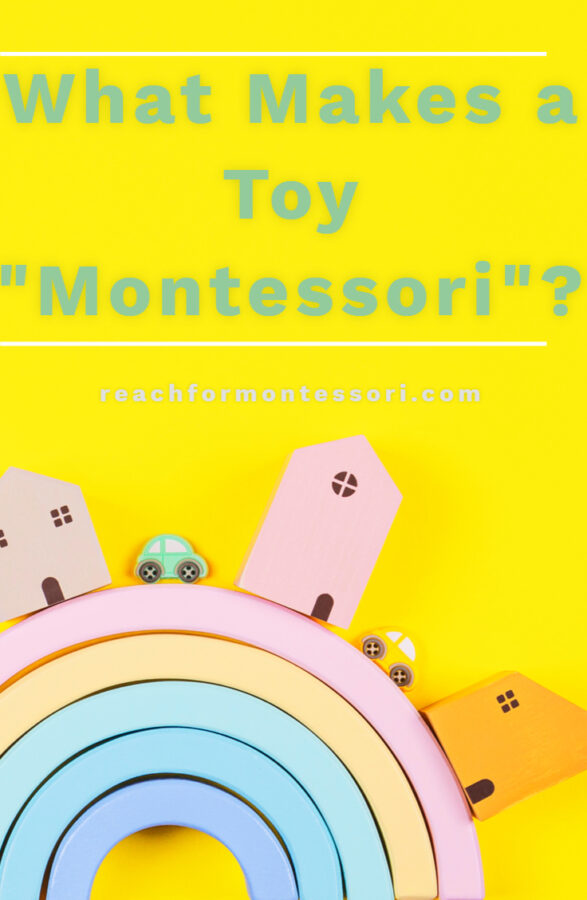
What makes a Montessori toy?
Simple
Everything in Montessori is geared toward helping a child learn and develop. In Montessori, this development is a natural result of a child’s active exploration of the world around them.
And children are innately curious. They don’t need all the bells and whistles that many modern toys feature to spark curiosity.
In the Montessori community, it is believed that when toys are simple in nature, a child is encouraged to be more proactive in their exploration of that toy, rather than the toy entertaining them passively with bright lights and loud noises, for instance.
With simple toys, the question becomes “What can I do with this?” rather than “What does this do?” It’s a subtle but important delineation.
Another concern with these flashy toys is the very real possibility of overstimulating the child. An overstimulated child is not likely to process any new information and can instead become tired, agitated, and irritable.
It’s the opposite of a learning mindset.
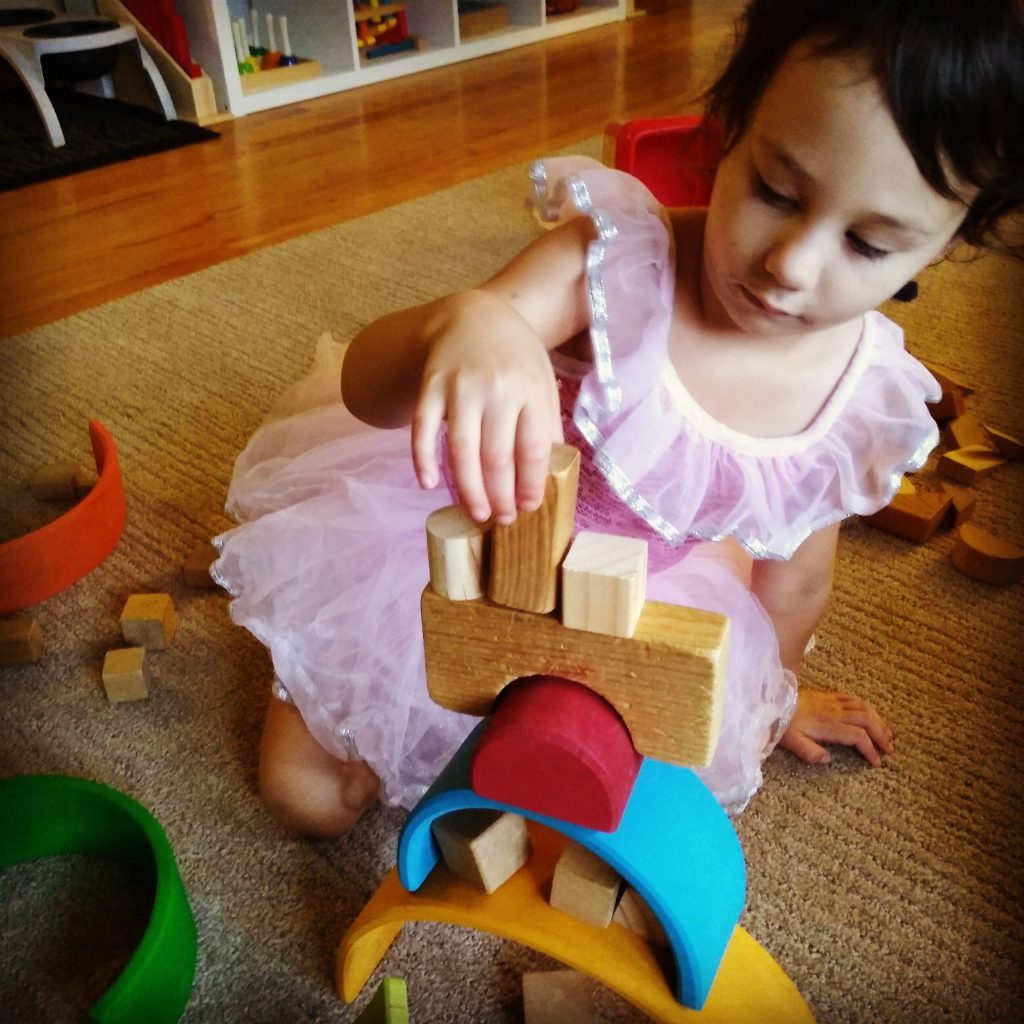
Natural
It’s not uncommon to see a lot of brightly-colored plastic when perusing your local toy store, but Montessorians prefer more natural materials, especially wood.
There are many reasons for this, but among the most important is the desire for a child to make connections with nature.
While plastic is a foreign, man-made material, a wooden object is familiar and triggers an association with the outside world.
Moreover, toys made of natural materials teach children about the rules that govern our world.
For instance, plastic toys are less likely to break or dent when dropped, but those made of natural materials may be damaged more easily.
Seeing these natural consequences can teach children to treat their playthings with care and respect.
Attractive
Montessori toys also tend to be attractive in terms of their appearance and craftsmanship.
This is because teachers and caregivers who follow the pedagogy want children to be naturally drawn to toys and activities, rather than these things be forced upon them.
Therefore, the more appealing the toy, the more likely the child is to desire interaction with it.
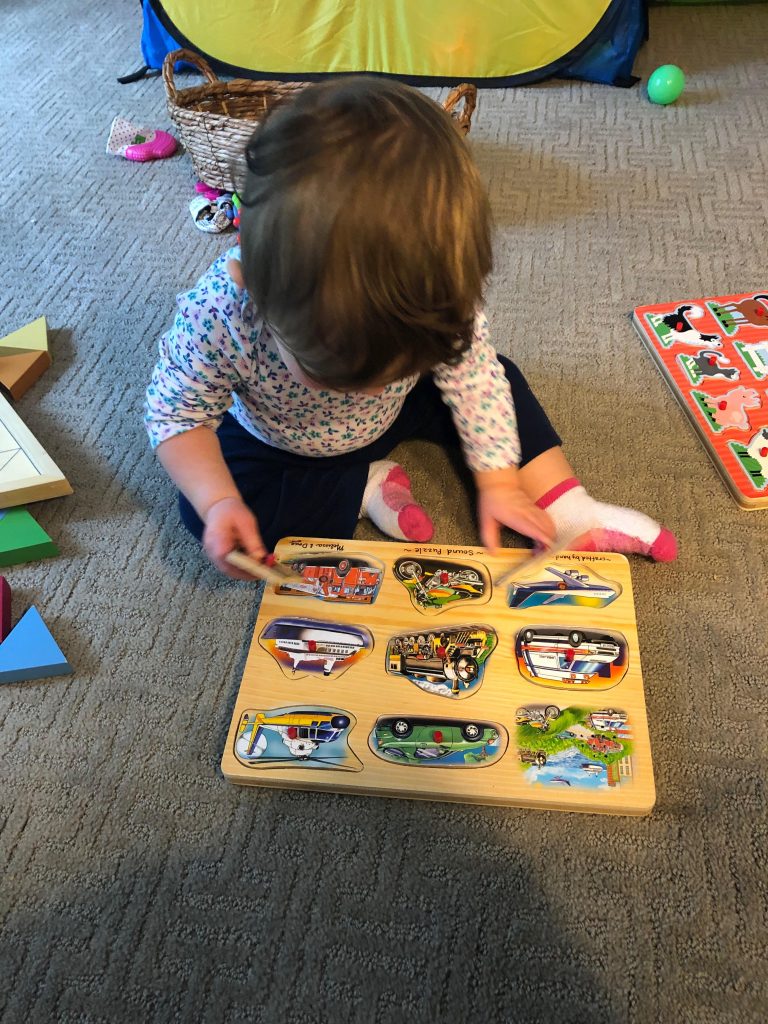
Sparse
Many well-meaning parents shower their children with toys of every color, shape, and size. Some little ones have so many toys that they couldn’t possibly attend to all of them.
Unfortunately, good intentions can sometimes have ill effects, and that tends to be the case with providing kids with too many playthings to choose from.
In Montessori, toys are not abundant, at least not from the child’s perspective.
Instead, the caregiver may rotate toys in and out of the prepared play environment so that children have a limited, but ever-changing selection of things to explore.
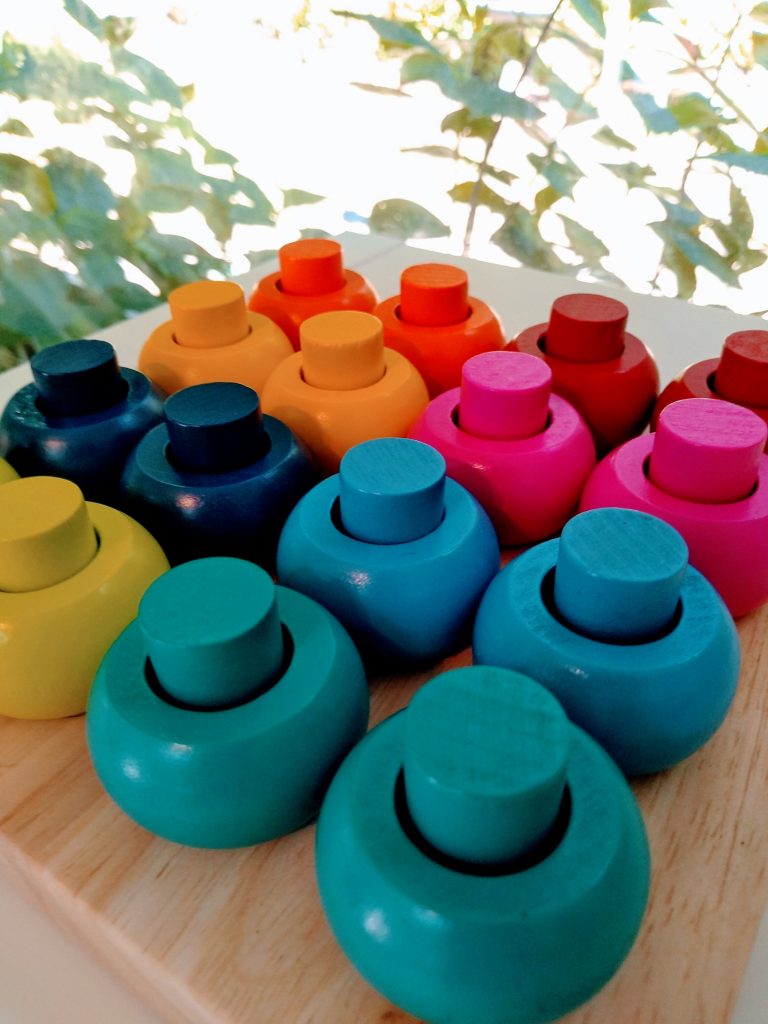
Practical
Montessori toys are typically practical in nature, and by that, I mean they are based in reality, not fantasy.
This is especially true for younger children whose learning is still very concrete. Dr. Montessori observed that the children in her care preferred these types of playthings over toys that facilitated “pretend play.”
That’s not to say that there’s no room for imagination when it comes to Montessori toys. It simply means that it is the caregiver’s role to provide playthings based in reality and then allow the child’s imagination to take over.
For instance, if we give a child a toy truck, he or she will recognize it as a vehicle similar to one seen on the road. This confirms the child’s notion of reality.
The youngster can then use his or her imagination to have the truck drive to the store, playground, or doctor’s office, for instance.
This is very different from providing the child with an action figure of a superhero or unicorn, for instance, that encourages fantasy (not imaginative) play.
Fantasy play—while common in mainstream society—is often disturbing to children. In the very least, it fails to teach them anything relevant about the world they live in.
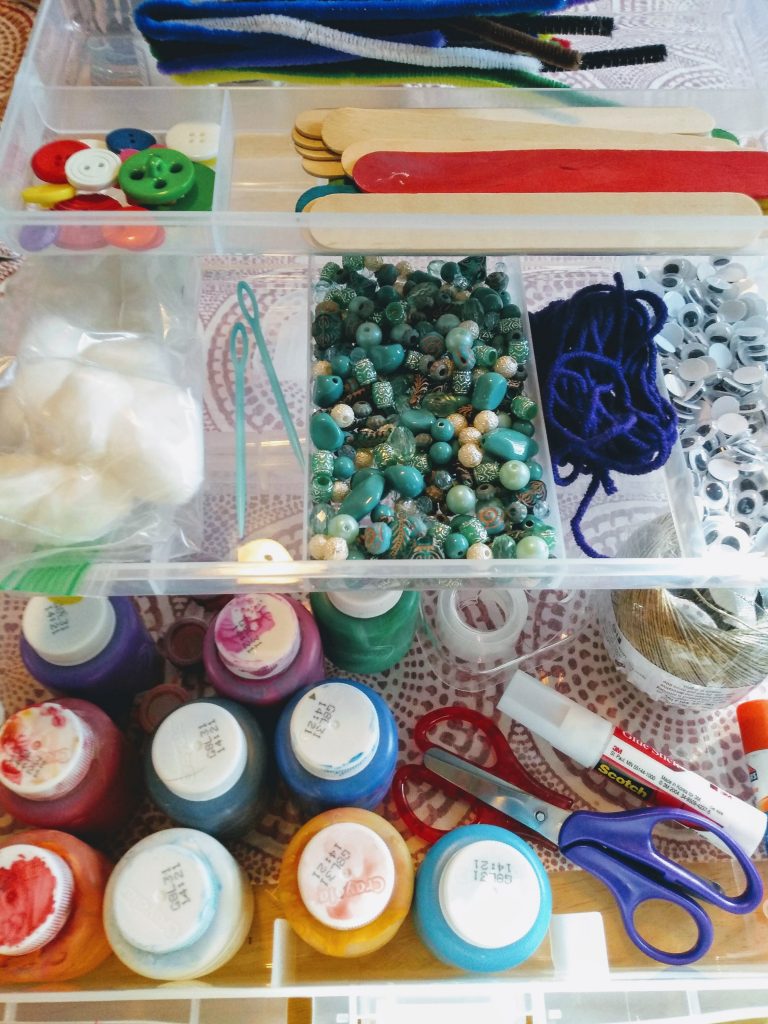
Open-Ended
Open-ended toys, celebrated in Montessori pedagogy, are those that aren’t intended for any specific use. Instead, these toys present limitless possibilities for the children who play with them.
Open-ended toys like blocks, finger paint, and dolls encourage a child’s creative tendencies and give them the freedom to explore and express themselves as they wish.
Open-ended play has been shown to help kids process their emotions and even calm themselves after a period of stress.
It can also help little ones develop a sense of independence and self-sufficiency as they learn to entertain and occupy themselves for longer periods of time.
Montessori learning materials are close-ended, but Montessori classrooms and homes alike encourage open-ended play – it is a different type of work for children.
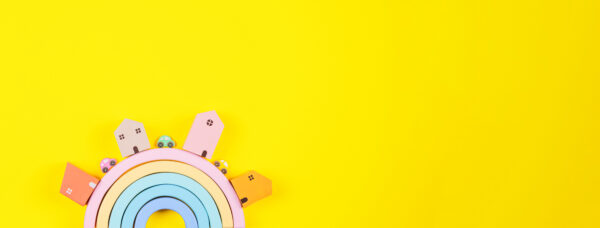
While there are no hard and fast rules for what constitutes a “Montessori toy,” there are some guidelines that can prove helpful as you strive to provide toys that promote healthy and natural child development.
My advice? Don’t overcomplicate the issue or try to stick to some arbitrary idea of what makes a toy Montessori. Instead, choose playthings for your child that are aligned with the Montessori principles you hold dear.
I’ll leave you with a word of encouragement—the mere fact that you’re putting conscious thought into selecting proper playthings for your little one is a sign that you’re moving in the right direction!
As Montessori herself said, “Play is the work of the child,” so it’s great that you’re taking it so seriously! Keep on keeping on, and kudos to you!
Montessori toys by age and category
Below is are lists of Montessori toy resources. In addition to the items below, be sure to check out Montessori Subscription Boxes for some amazing Montessori toys for different age groups.
Montessori toys for babies
Montessori toddler toys
- Montessori Toys for 18-month-olds
- Montessori Toys for 1-year-olds
- Montessori Toys for Toddlers who like to Throw Things
- Montessori Toys for 2-year-olds
- Montessori-aligned Dolls
- Montessori Travel Toys
- Nuts & Bolts Toys
- Hammering Toys
- Busy Boards
Montessori preschooler toys
- Montessori Toys for 3-year-olds
- Montessori Play Kitchens
- Toniebox – A Montessori-aligned Music Player
- Nuts & Bolts Toys
- Kids Washing Machines
- Hammering Toys
Montessori gross Motor Toys
- Montessori Outdoor Toys
- Montessori Gross Motor Toys
- Montessori Balance Boards
- Pikler Triangle: What to Know Before you Buy
Join in the conversation: What are your child’s favorite Montessori playthings?
Cheers and don't forget to subscribe!
